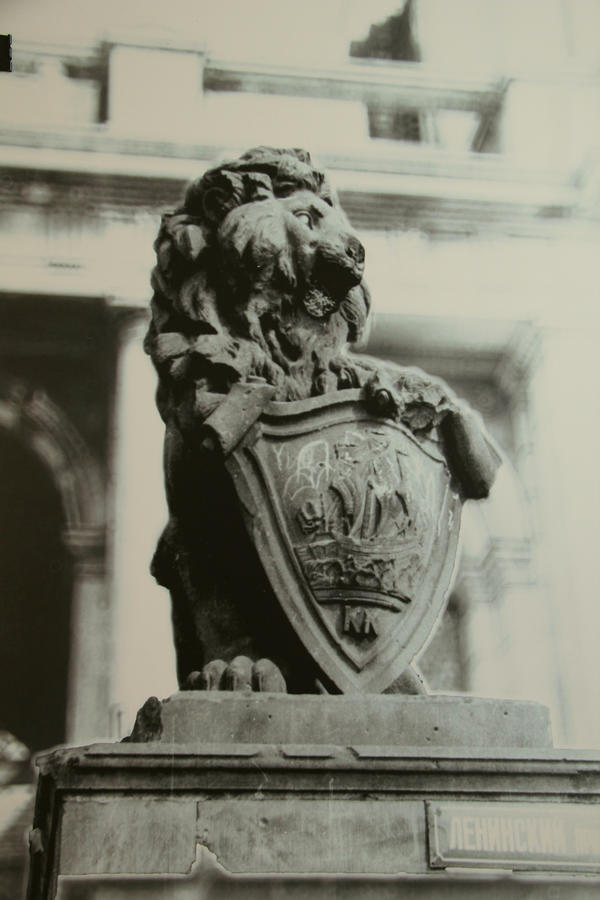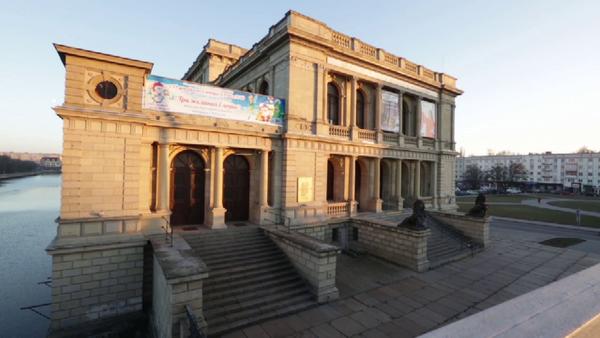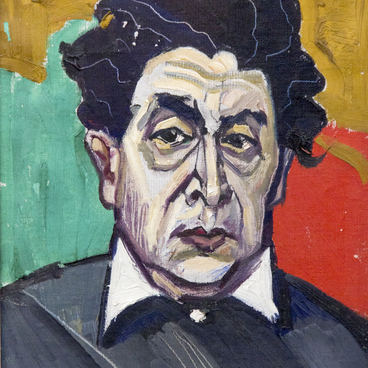Photographer Victor Tolmachev captured the sculpture of a lion on the right side of the central entrance to the Exchange House. The building has been one of the symbols of the city for many years, featured in all guide books and printed on postcards. It is now owned by Kaliningrad Museum of Fine Arts as its main exhibition space.
1 / 2
Lion Sculpture at the Exchange House
Creation period
1960
Dimensions
18х13 cm
Technique
Photograph paper, black and white photo print, manual print
Collection
6
Open in app#1
Tolmachev V.P.
Lion Sculpture at the Entrance to the Exchange House
#2
#3
The Exchange House was designed by German architect Heinrich Muller, the sculptural pair of lions with shields was made by Emil Hundrieser, a famous sculptor born in Königsberg.
#4
The modern Exchange House. Source: www.culture.ru.
#5
Königsberg was a trading city since olden times and needed an exchange. The first building intended for it was built on the southern bank of the Pregel river in 1623. It was located across the road from the current one. However, the wooden building soon deteriorated and fell into disrepair. Several attempts were made in the 19th century to rebuild the old building and construct a new one but all the buildings were destroyed for various reasons. The current building was constructed only in the 1870’s — a luxurious mansion resembling Italian palazzo of the Renaissance period. At that time, the building served not only for trading but was also a venue for exhibitions, concerts, balls and other social events. The citizens even called the district little Venice.
#6
The lion sculptures in front of the building were an example of neo-baroque style. They were erected on the sides of the grand staircase. Emil Hundrieser placed on the lions’ shields the merchants’ arms and the town arms of Königsberg, however, they wore out later. Now it is very difficult to make out the images. Hundrieser also created symbolic images of the four continents to emphasize strong ties of Königsberg to the rest of the world. These sculptural groups were placed on the roof of the Exchange but did not survive World War II. In the summer of 1944, the building was partially destroyed by the British air strike. Nevertheless, the lions holding the shields survived until today.
#7
After the end of World War II the Exchange House stood empty for a long time, only seen sometimes in Soviet films about the war showing post-war ruins. In 1960, the Soviet government declared the building an architectural monument. On the outside, it almost preserved its pre-war image but the interior was lost during the reconstruction.
#8
Kaliningrad Regional Museum of Fine Arts
read morehide
00:00
00:00
1x
Lion Sculpture at the Exchange House
Creation period
1960
Dimensions
18х13 cm
Technique
Photograph paper, black and white photo print, manual print
Collection
6
Open in app
Share




